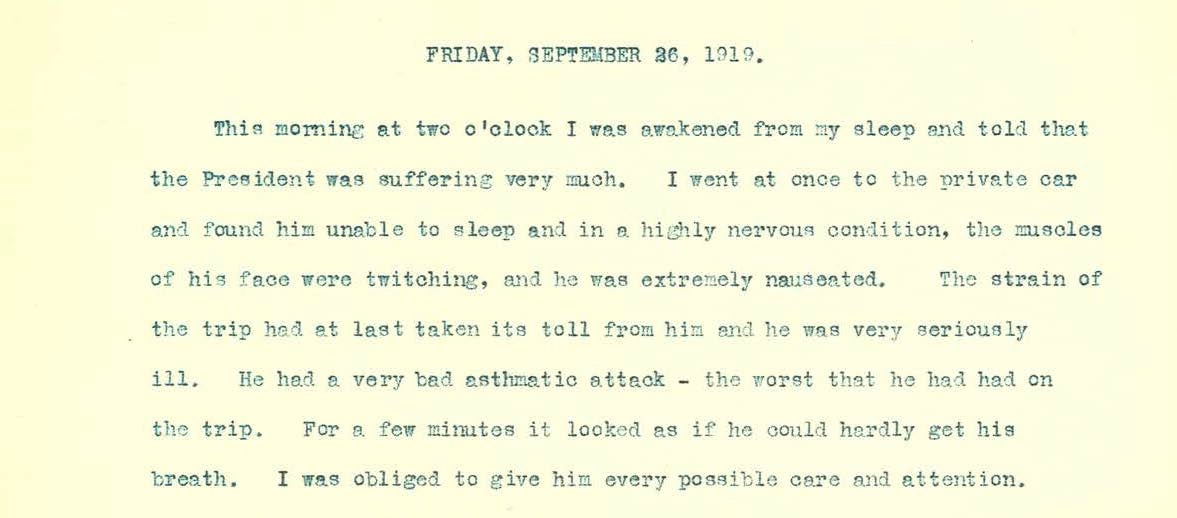Woodrow Wilson Suffers Stroke, 1919
Posted by Beth Huffer on Friday, 09/25/2015
When World War I ended, President Woodrow Wilson attended the Paris Peace Conference, where the Allied nations met to write the Treaty of Versailles. In September 1919, President Woodrow Wilson embarked on a speaking tour of US cities to gain support for the treaty and the League of Nations, which Americans were reluctant to join.
Traveling with the President was Dr. Cary Grayson, Wilson’s personal physician and friend. Grayson kept a diary of the trip and included notes on Wilson’s health. On September 26, on a train bound for Wichita, Kansas, Grayson was woken up to attend to Wilson:

Grayson attributed this health breakdown to the immense mental and physical strain of the trip and urged Wilson to cancel the remaining tour stops.
Wilson returned to Washington, DC, on September 28, and Grayson commenced a regimen of rest and seclusion for the President, insisting that "he should be not bothered with any matters of an official character, and especially that no question of controversy should be brought to his attention." On October 2, Wilson experienced numbness on his left side and collapsed at the White House. Neurologist Dr. Dercum evaluated Wilson:

Following his stroke, Wilson remained in seclusion with his wife, Edith, as the gatekeeper.
Although the United States did not join the League of Nations, Wilson was awarded the Nobel Peace Prize for his role in its founding. Wilson left office in 1921 and died in Washington, DC, three years later.